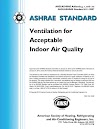A practical guide to performance measurements in mechanical heating, ventilating and air conditioning systems
Introduction:
Heating, Ventilating, and Air Conditioning (HVAC) relates to systems that perform processes
designed to regulate the air conditions within buildings for the comfort and safety of occupants or
for commercial and industrial processes or for storage of goods. HVAC systems condition and
move air to desired areas of an indoor environment to create and maintain desirable
temperature, humidity, ventilation and air purity.
Depending on geographic location and building construction, various types of interior climate
control systems help ensure that interior spaces are maintained at comfortable levels year-round.
With today’s energy conservation concerns, buildings are constructed to be much tighter,
reducing the level of natural exchange between indoor and outdoor air. As a result, more and
more buildings rely on mechanical conditioning and distribution systems for managing air.
A properly operated HVAC system finds the often-delicate balance between optimizing occupant
comfort while controlling operating costs. Comfort is an important issue for occupant satisfaction,
which can directly affect concentration and productivity. At the same time, controlling these
comfort and health parameters directly affects HVAC system operating costs in terms of energy,
maintenance and equipment life.
This handbook is not intended to be a comprehensive guide for all possible issues associated with
HVAC system operation and maintenance. There are volumes on the subject. Rather, it highlights
some measurements and techniques that can be used to evaluate HVAC systems for optimum
operation.







1 Comments
This handbook is a valuable resource for HVAC professionals and facility managers alike. A structured approach to HVAC assessment is essential for ensuring system efficiency, identifying performance gaps, and planning preventive maintenance. The way this article emphasizes detailed evaluation—covering airflow, equipment condition, energy use, and control systems—helps create a holistic understanding of HVAC health. It’s especially useful in today’s environment, where energy optimization and indoor air quality are top priorities. Looking forward to more technical deep-dives like this that support informed decision-making in MEP and facility management.
ReplyDeletehttps://anfarnd.com/